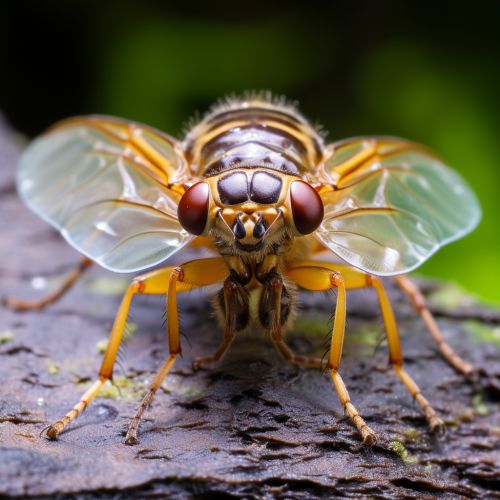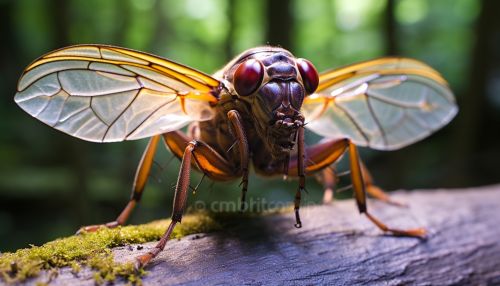Cicada
Taxonomy and Etymology
Cicadas belong to the insect order known as Hemiptera, or true bugs. They are further classified into the family Cicadidae. The term "cicada" is derived from the Latin word "cicada", which means "tree cricket". There are approximately 3,000 species of cicadas, which are typically grouped into two categories: annual cicadas and periodical cicadas.
Description
Cicadas are well-known for their distinctive physical characteristics. They typically range in size from 0.75 to 2.25 inches, depending on the species. They have a stout body, a broad head with short antennae, and large compound eyes situated on either side of the head. Their wings are transparent and are held roof-like over the abdomen when at rest. The forewings are larger than the hind wings and are divided into several veins that create a unique pattern.


Life Cycle
The life cycle of a cicada is one of the most fascinating aspects of these insects. Cicadas are known for their unique life cycle, which includes three stages: egg, nymph, and adult. The female cicada lays her eggs on a twig or branch. After hatching, the nymphs drop to the ground and burrow into the soil, where they feed on the sap from plant roots. The nymph stage can last for several years, with some species of periodical cicadas spending up to 17 years underground. After this period, the nymphs emerge from the ground, shed their exoskeleton, and transform into adults. This process is known as metamorphosis.
Behavior and Ecology
Cicadas are best known for their loud and distinctive songs, which are produced by the males to attract females. This sound is produced by a complex structure called a tymbal, a pair of ribbed membranes at the base of the abdomen. When the cicada flexes its muscles, the tymbals buckle inwards, producing a click. As the muscles relax, the tymbals return to their original position, producing another click. The rapid repetition of this process produces a continuous trill.
Cicadas are also known for their cryptic behavior. They spend the majority of their lives underground, emerging only to molt and reproduce. This behavior, combined with their long life cycles, is believed to be a survival strategy to avoid predators.
Human Interaction
Cicadas have a significant cultural impact in various societies. In some cultures, they are symbols of rebirth or immortality due to their long life cycles and dramatic emergence from the ground. In others, they are considered pests due to their loud songs and potential damage to plant life during egg-laying.
Despite their occasional status as pests, cicadas are not harmful to humans. They do not bite or sting and are not known to carry diseases. In fact, in some cultures, cicadas are considered a delicacy and are collected for their nutritional value.
